Audio Architecture: AMPLIFIED AND SONIFIED
Mark Bain‘s work is a part of the series of concerts intended to be an homage to the loudspeaker. It’s only accessible by walking through the first part of Konrad Smoleński’s installation “One mind in a million heads” – a curved wooden hallway with an array of loudspeakers placed inwards.
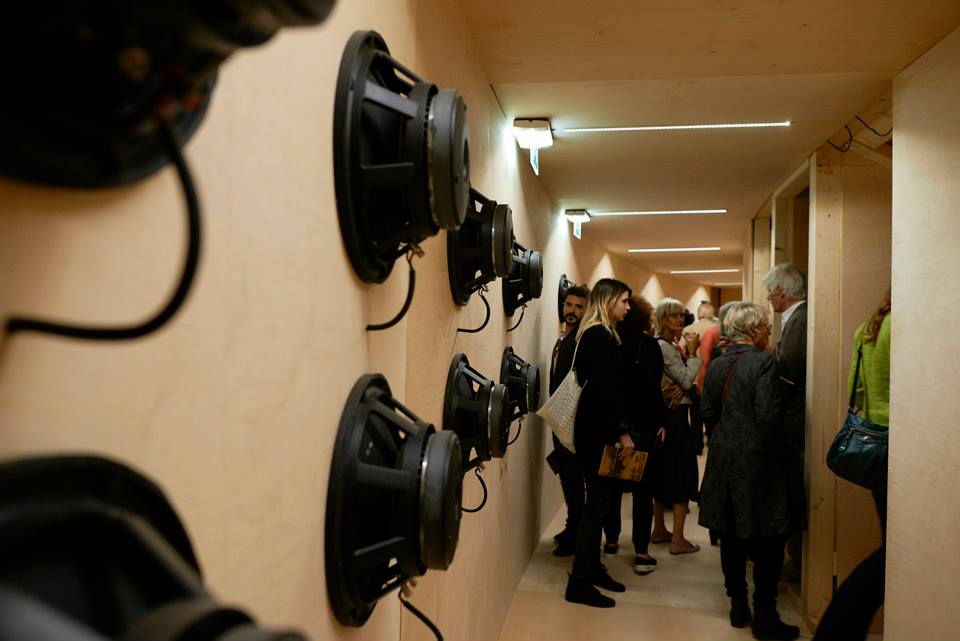
The rumble can be heard from afar, equally inviting and frightening. Once you step in, you find yourself inside an immense loudspeaker box. The speakers blast out bursts of low thunder noise, resonating between the hallway walls, adding a new sound layer to it all. It is remarkable how the fear leaves you, the moment the source of the sound becomes visible, despite the rising volume and escalating intensity of the noise.
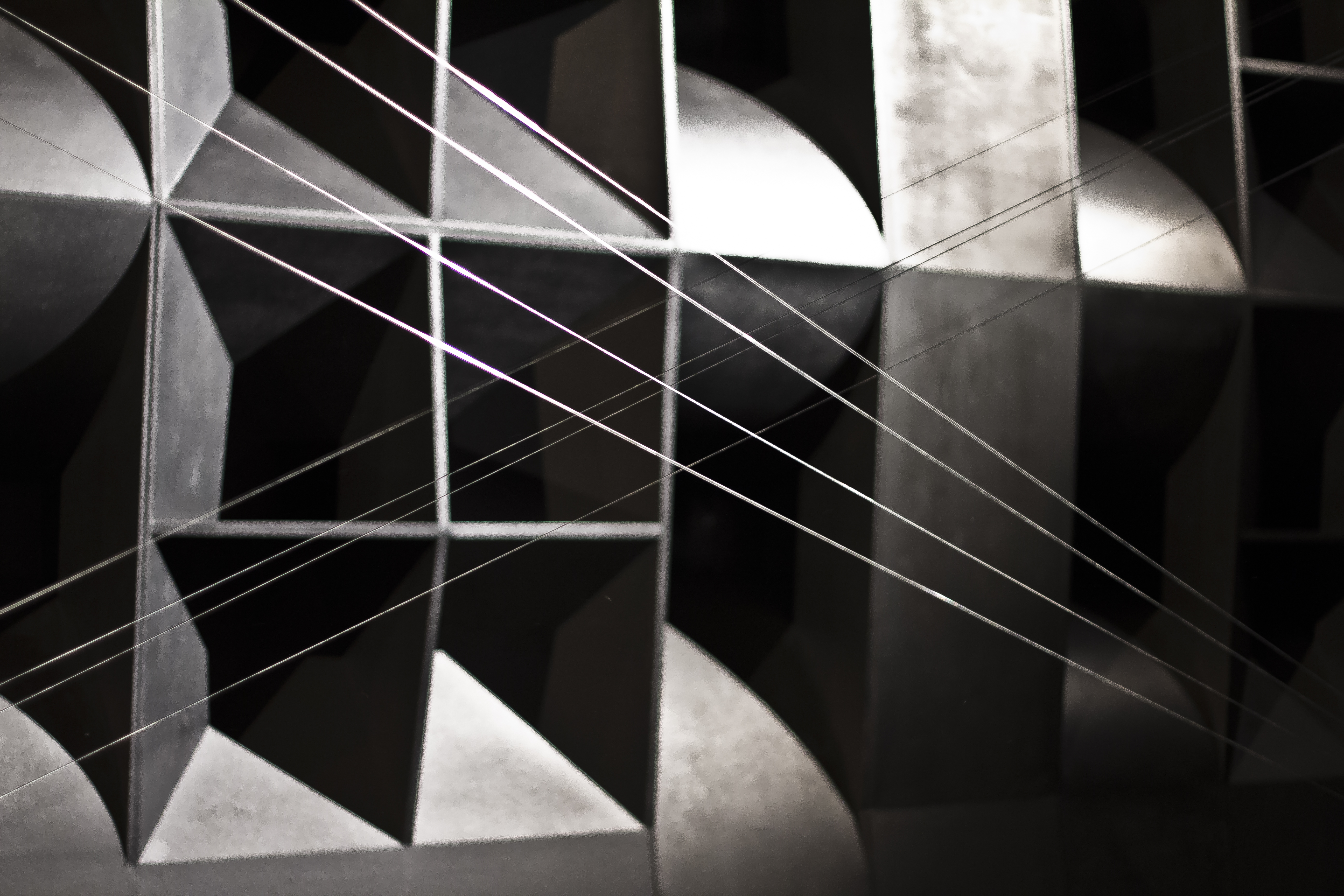
In the middle of the curvy hallway you exit to meet the second part of Smoleński’s installation: a six by sixteen meter speaker wall opposite a big red glowing screen – painted black and ill-lit, with symmetrical slanted sections combined with curved cones. It’s scary and ominous, even with no sound coming from it.
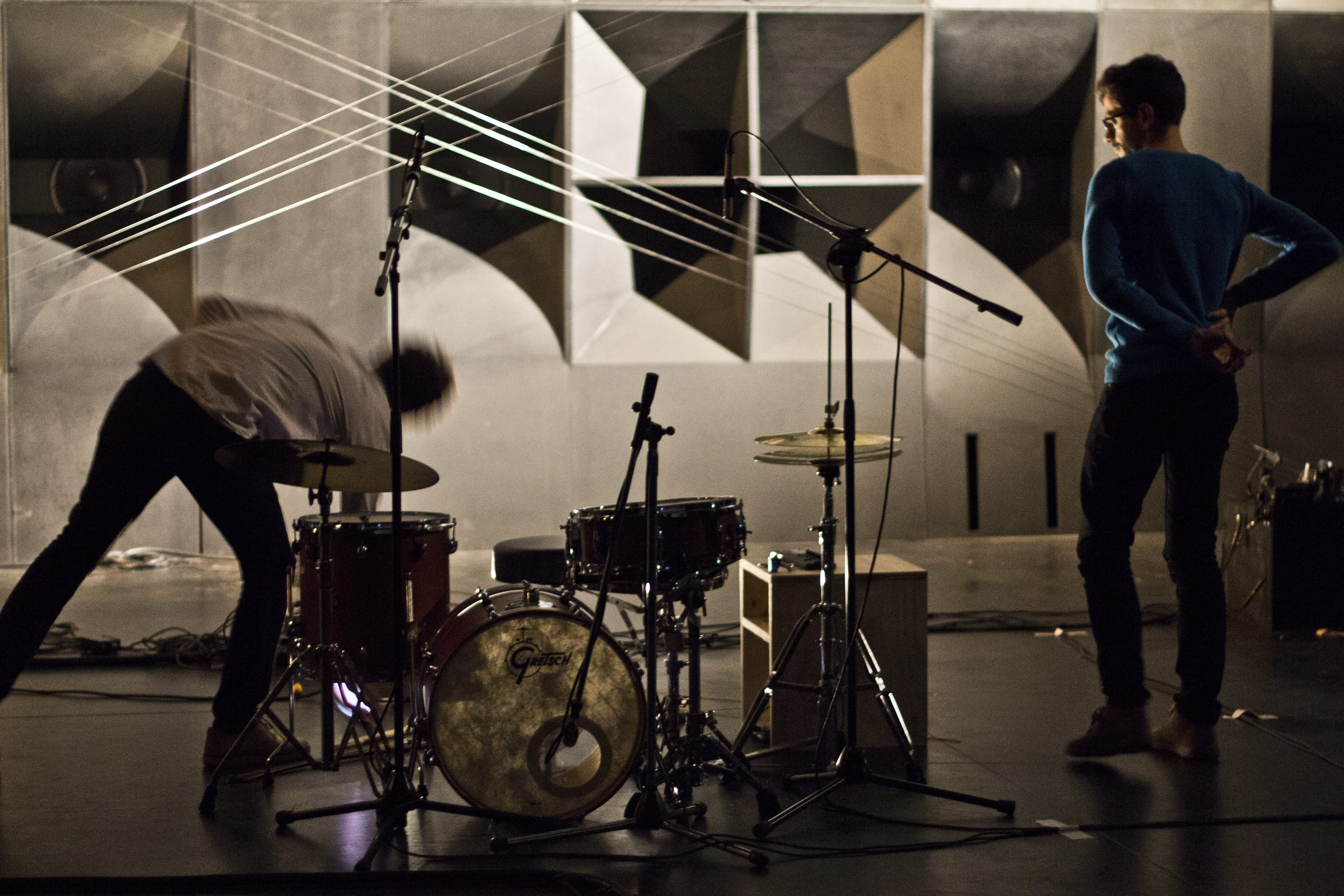
The earthquake noise of the hallway is the backdrop of Eli Keszler’s concert that took place earlier in the evening. During Mark Bain’s performance the hallway is quiet. The wall of speakers is the one generating all the sound.
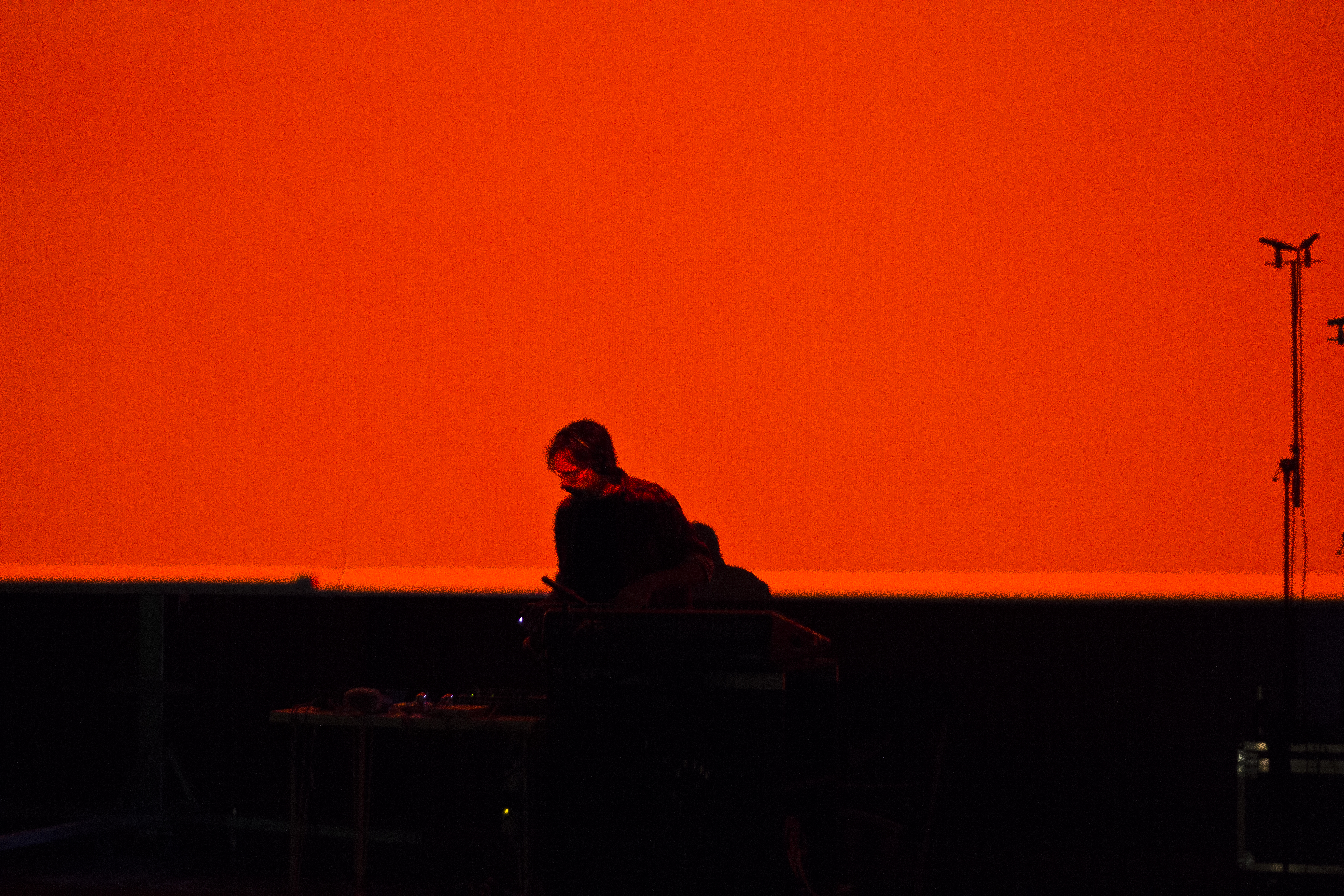
The concert starts with an unpleasant low rumble, soon accompanied by irritating high-pitched hissing and shrieking. The audience is spread out on the floor, many sitting down or laying flat on their backs. I see several people holding their heads in discomfort. This scene is like a war battlefield; casualties throughout. The wall is our prison while bombers are flying low continuously.
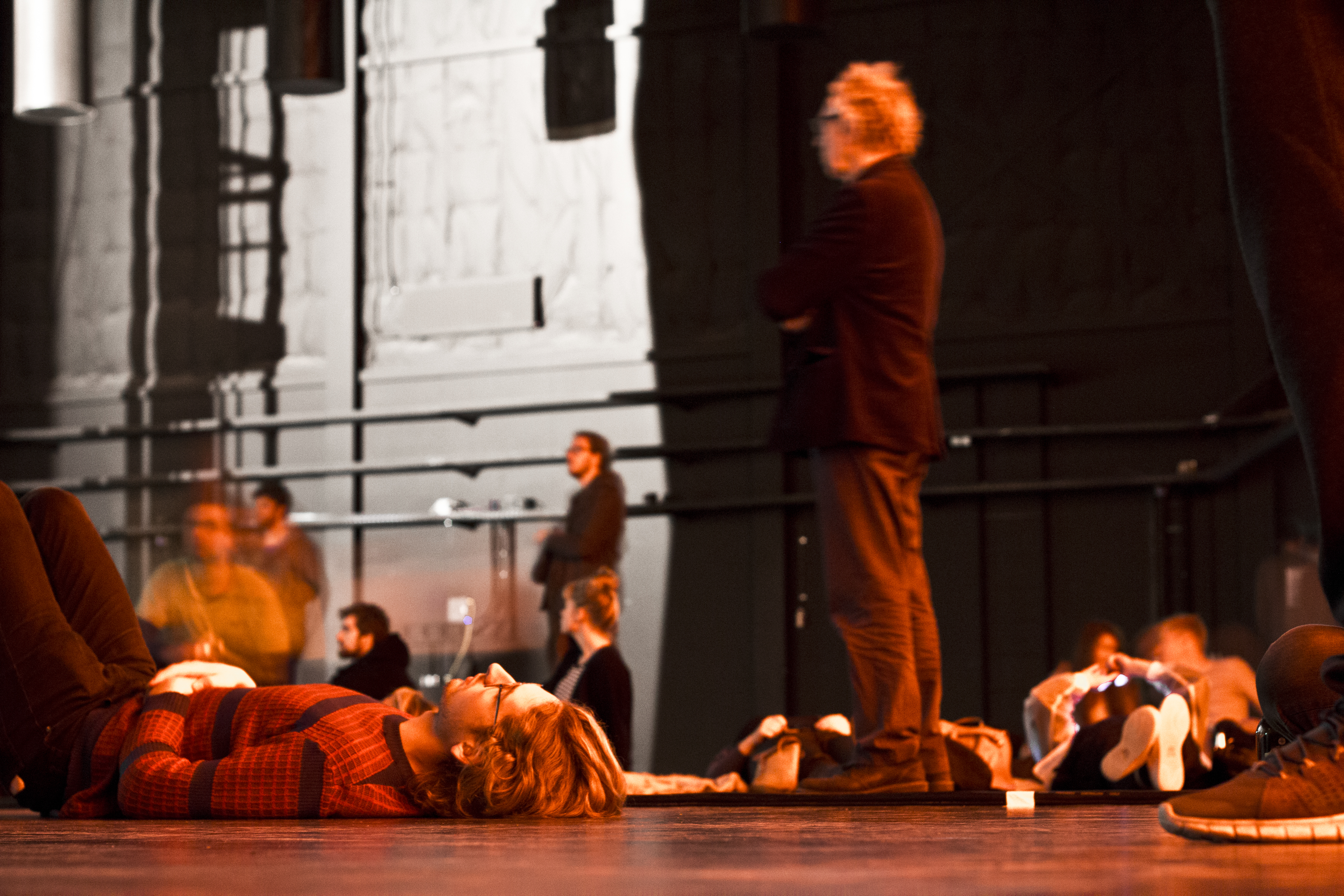 The artist chooses to overwhelm us with the most annoying, irritating and ugly noises known to men, and keeps them going long enough for our perception of the sound to change.
The artist chooses to overwhelm us with the most annoying, irritating and ugly noises known to men, and keeps them going long enough for our perception of the sound to change.
And it does.
New noises are added and removed slowly, but without the overall sound losing intensity or changing too much color. Sometimes the wall resonates, or the building, or both. You sometimes wonder which noises were intentionally added and which are the result of the interference and resonance. Slowly, you get used to the noise, and the level of annoyance drops. This is clearly visible in the reaction of the audience too: people sit in more relaxed positions. They’re exchanging small talks and an occasional smile. Someone walks up to the intimidating wall to see up close what it looks like. The discomfort seems to have disappeared. More than a few people leave the scene.
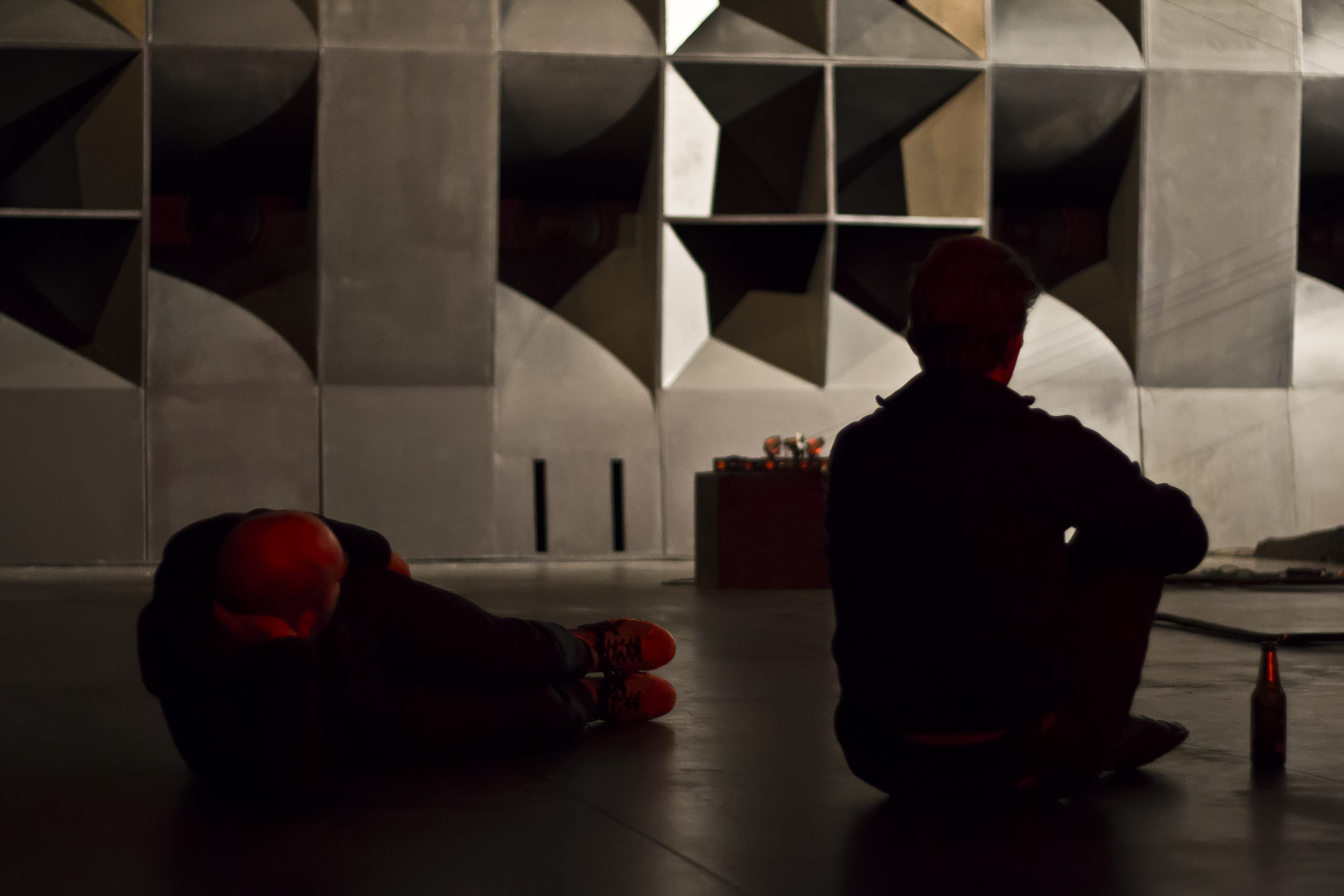
The performance changed from annoying to tedious, with too little surprises or moments of wonder. If it was the artist’s intention to make us get used to the discomfort – he succeeded. As soon as I realized that the dynamics of the sound would stay the same, I knew that the change of perception is going to happen. Getting used to the sound was the obvious consequence.
Marc Bain tries to trigger resonating sounds of the buildings by using subsonic noises. Was it his intention to let us “hear” the Zuiderstrand theater and the speakers’ wall? If so, the architecture opted for silence. Unlike Smoleński’s hallway which communicated the message of audible architecture, the sound of the theater and the wall got lost in between audible low frequencies and high-pitched fragments that masked any resonating effect.
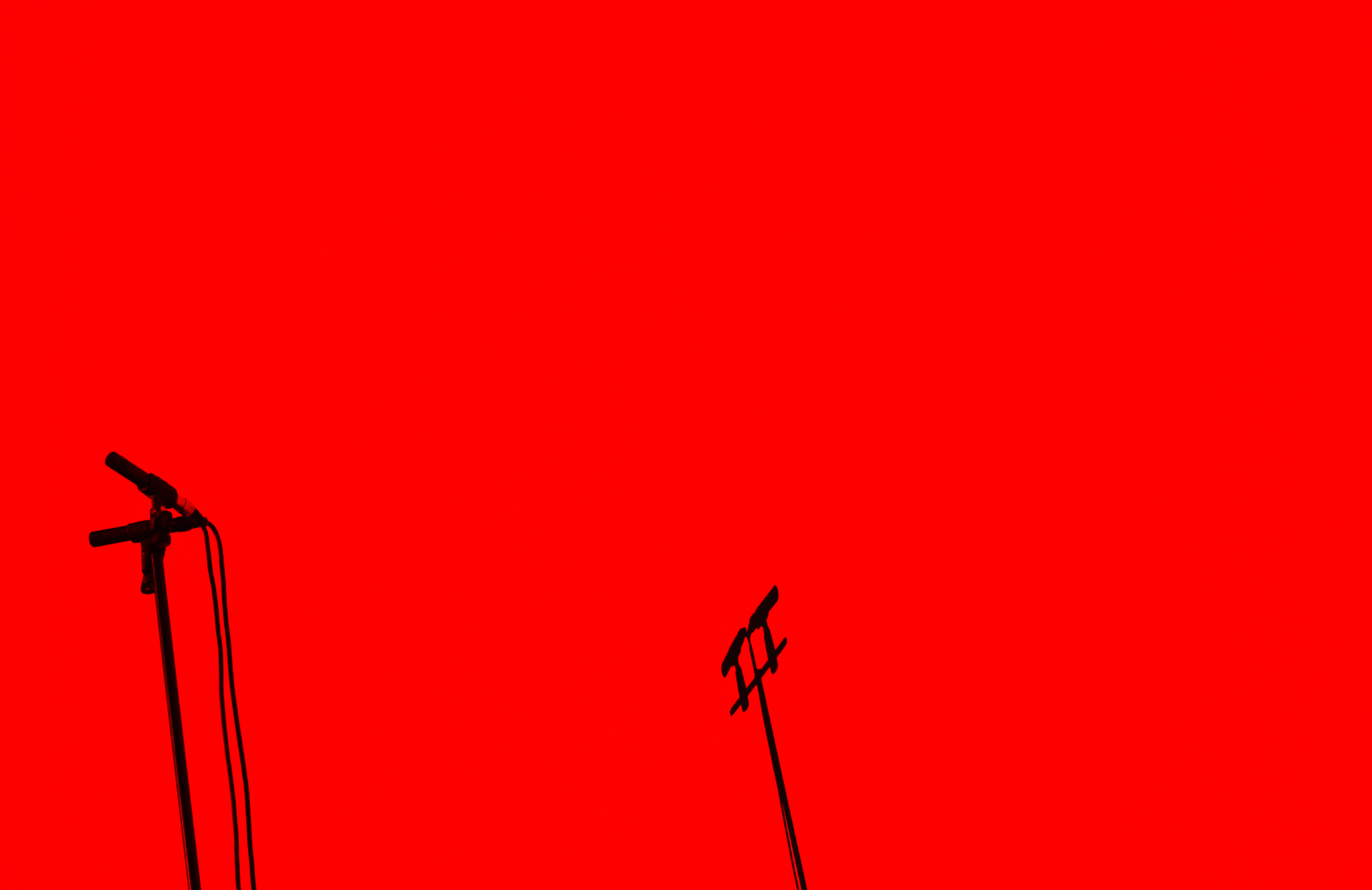
Bain should’ve stayed faithful to subsonic sounds. The walls must have been too sturdy to speak or Bain’s work was too high-pitched. Either way, it didn’t work. I was left with annoyance and boredom, sensations not quite special enough.
For the curious ones, Volkspaleis is on until 16 November 2014.
Zuiderstrandtheater, Kranenburgweg 211, Scheveningen.

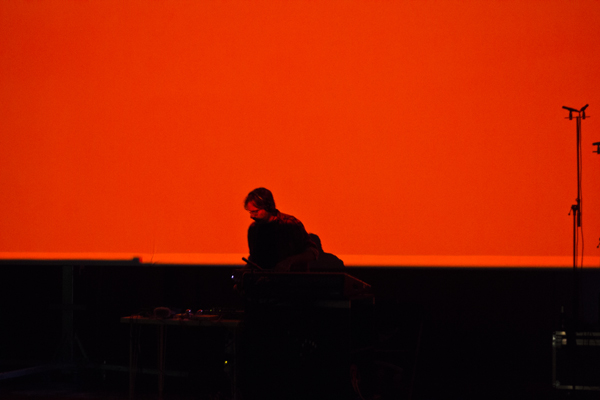
Pingback:HOMMAGE À LOUDSPEAKER | Magpie Digs for Gold